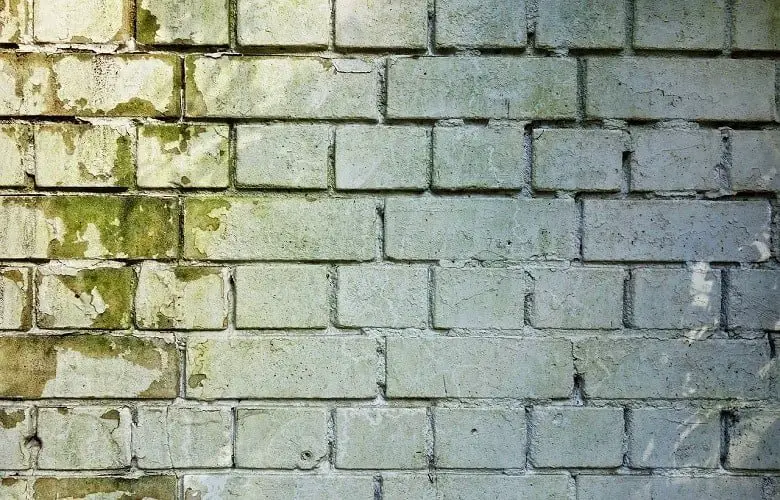There is danger in either too much or too little humidity. In the guide below, I will take you through several economical ways on how to remove humidity from a room without a dehumidifier.
Humidity is the amount of water moisture in the air around you. High humidity mostly occurs when the air is warm; this is because warm temperatures’ can hold a lot of water.
As a homeowner, it is your sole responsibility to determine the amount of moisture you want in your home.
An increase in humidity can result from hot showers, steam from the cooking pot, or even running the humidifier.
(Read more on Best Attic Dehumidifier)
Signs That Your Home Too Humid
Many people living in humid areas have no clue how much their houses are damp.
Nevertheless, several indicators can tell you how much your home is humid.
1) Mold Growth.

Molds are most likely to grow better in damp and dark areas such as the basements or attic.
Always look for those dark and little spots on the walls, windowsills, sink and bathtub rooms, kitchen, and even ceiling.
The dark areas are a sure indication you might be facing a mold problem.
2) Condensation
Condensation often occurs when warm air from cooking or showers collides with cold surfaces such a window glasses.
In case you notice droplets of water on your glass windows, it’s an indication that there a lot of moisture in your house.
If not taken care of, excess moisture can lead to mold growth on the walls or even the ceilings.
3) Rotting Of the Woods

Any excess moisture in the air due to excess humidity will end up being retained by the woods in your house.
The wood will either start to rot or attract bugs like termites.
4) Damp And Mold Like Odors
Musty odors may be faint and not easily noticed unless you are keenly looking for them.
Most of the time, the smell results from mold growing spots or places damaged by water.
Whether there are visible signs of mold or not, do not ignore the odor since mold can grow in hidden locations such as under the carpet or even behind wallpapers.
5) Allergic Reactions.

Molds emit toxic gases that may trigger allergic reactions.
In case you notice allergic reactions such as runny nose or sneezing while indoors most probable cause is the excess humid, which is ferrying allergens around you.
(Read more on best air purifiers for allergies and pets)
(Read more on what does a nasal plug look like)
6) A Humidistat
Whether there are signs or not to indicate excess humidity in your house, a humidistat is the only sure way to confirm the amount of moisture in your home.
Humidity ranging between 45% to 55% RH is termed as the ideal indoor humidity for your house.
Anything above 70%RH is a breeding spot for mold and mildew.
Most dehumidifying and air conditioning units have an inbuilt humidistat, but you can buy them as a standalone device.
10 DIY Ideas On How To Remove Humidity From A Room Without A Dehumidifier
When there is too much humidity in your home and moisture is building, it can lead to damages such as chipping of paints on your wall.
Besides, it can ruin your wood furniture and even damage your electronics.
On the extreme, it can be fatal to people who have asthma or who have allergies.
Although a dehumidifier has been vetted as the only sure way to reducing humidity in our houses, it can be costly, and not everyone can afford them.
However, below are some of the hacks on how to remove humidity from a room without a dehumidifier for those who do not own any dehumidifier.
1. Take Cooler And Short Showers

Taking warm or hot showers can rapidly increase humidity in your home due to too much steam.
The longer the time you take a shower, there will be a lot of steam produced and accumulate in the house.
To deal with shower steams, your family members will have to take short and colder showers.
Also, ensure to leave your bathroom windows and doors open so that the flow of air is increased and condensation does not occur.
2. Outdoor Cloth Lines

Do not hang wet clothes indoors. Wet clothes tend to increase indoor humidity, more so if the room they have been hanged into is poorly ventilated.
Therefore, the best choice would be to hang clothes to dry outdoors. Place the cloth lines outside and hang the clothes to dry.
If you reside in apartments where there are no balconies to hang clothes outside, please use clothes dryers that vent to the outdoors.
3. Switch On The Fan
Poor or insufficient airflow can lead to water vapor accumulation, which can get stagnated in a room.
Nevertheless, a constant flow of air in the room or house is one easy way to deal with moisture accumulation, which can lead to the growth of mold and mildew.
Running a fan reduces humidity in a room. The fan breeze helps to evaporate excess moisture in your home, making you feel cooler.
One advantage of a fan is that it is easy to set up, whether in the kitchen, bathroom, or even the bedroom.
4. Run The Air Conditioner
When the breeze from the outside is not cooperating, your air conditioner will come in handy.
When you turn it on, your air conditioner not only cools down the room but also helps to reduce the humidity indoors, especially when the weather is humid.
All in all, most modern air conditioners are installed with a dehumidifying function that will take care of moisture as it cools the air.
(Read more on why your air conditioner sounds like water running)
5. Silica Gel/Baking Soda
Besides being great at absorbing odor in your fridge, baking soda is excellent at absorbing too much moisture in the air.
Place the baking soda in a box and leave the box open near the window of a room with the tendency of being more humid than the others.
In addition, always check the box or container once or twice a week to empty the water collected.
6. Ensure To Repair Any Water Leaks To Control Excess Moisture
Cracked walls, leaking water pipes, broken seals, among others, are some of the channels through which moisture is introduced in our homes.
Warm air from the outside will always condense if it attaches itself to cooler items indoors.
If the condensed air is not cleaned quickly, it can lead to wood rotting, mildew growth, and mold.
Often higher a plumber or by yourself check for any cracks on the outside walls and have them fixed as soon as possible.
7. Open Doors And Windows To Improve Ventilation
According to the National Asthma Council, one of the easiest and cheap ways to remove humidity from a room is through ventilation.
Ensure you open both doors and windows in the room for fresh air to circulate for as long as possible.
Opening doors and windows will be more beneficial to spaces such as the kitchen and bathroom as they tend to generate a lot of moisture.
8. Clean Your Furnace/ Replace AC Filters
Always endeavor to clean or change your AC filters. Blocked/clogged filters can limit air movement in your house, reducing the AC functionality of dehumidifying your home.
Other than restricting air movement, clogged air filters can damage the air conditioners in the long run.
On the other hand, if you do not have AC in your home, an exhaust fan in the kitchen will still assist in air movement.
9. Charcoal Briquettes

In addition to removing odors in the air, charcoal briquettes are also good for removing excess moisture in the air.
Buy a bag of charcoal and place the briquettes in a bowl wrapped in a towel.
The charcoal will absorb the excess water in the air for almost three months. If possible, buy the charcoal made from coconut shells.
10. The Rock Salt
Rock salt is one way of dehumidifying a room naturally without harsh chemicals and expensive machinery.
The salt is hygroscopic, meaning it pulls, absorbs, and stores water particles around it just the way a dehumidifier works.
Arm yourself with two equal containers and the salt. Drill holes in one of the containers so that absorbed water can sip through.
The other container should not be drilled. Put your salt into the container with the holes, and then place it on top of the container without holes.
The container without holes will collect any water drawn from the air. Often ensure to empty the bottom container and replace the rock salt in the top container.
A Final Thought On How To Remove Humidity From A Room Without A Dehumidifier
Even though the above tips on removing humidity from a room without a dehumidifier are not as effective as a dehumidifier unit is, they are natural and pocket friendly.
The recommendations are based on a good flow of air indoors through ventilation and absorption of excess moisture from the air using moisture-absorbing agents.
Besides, they are natural and cheap. You can experiment and try each method to ascertain which way will be suitable for your need.
You can combine several tips for increased efficiency while saving on electricity costs and avoid purchasing expensive gadgets.

